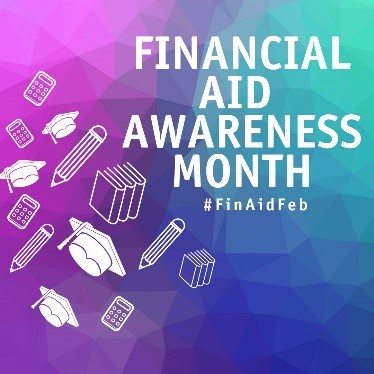February is Financial Aid Awareness Month and throughout the month the higher education community provides crucial information to students and families about access to federal, state, and institutional student aid. It’s a perfect time to explore questions you may have about the financial aid process. In the simplest of terms, financial aid is money to help pay for college. The basic types of aid can be grouped into three categories-free money, earned money and borrowed money. Let’s learn a bit about each of these!
Free money is money that doesn’t have to be repaid. The most common types of free money are scholarships and grants, which are provided by the U.S. Department of Education, the state of Oklahoma, and other private, corporate and tribal sources. Scholarships come in all shapes and sizes and can be based on academics, athletic skills, hobbies, ethnicity, community service and more. Grants are usually based on your financial need, and financial need is determined by your completion of the Free Application for Federal Student Aid, or FAFSA. The total amount of federal grant aid in 2022-23 was $37.7 billion, including $27.2 billion in Pell Grants.
Earned money, or Work-Study, is also based on your financial need and is an opportunity to work in a part-time job while you’re in college. You can use your earnings to help pay college expenses. If you don’t qualify for a work-study job, you may want to check out the college’s career center to apply for a campus job or look for part-time work on your own.
Borrowed money means taking out a student loan. A loan is money you borrow and must pay back with interest. If you apply for financial aid, you may be offered federal student loans as part of your school’s financial aid offer. If you decide to accept a loan, make sure you understand the terms and conditions. Student loans can come from the federal government, from private sources such as a bank or financial institution, or from other organizations. Loans provided by the federal government, called federal student loans, usually have more benefits and repayment options than private loans. Do your homework to determine which type of loan is best for you and only borrow what you need for educational expenses.
To learn more about the types of financial aid available to Oklahoma students, explore these resources:

